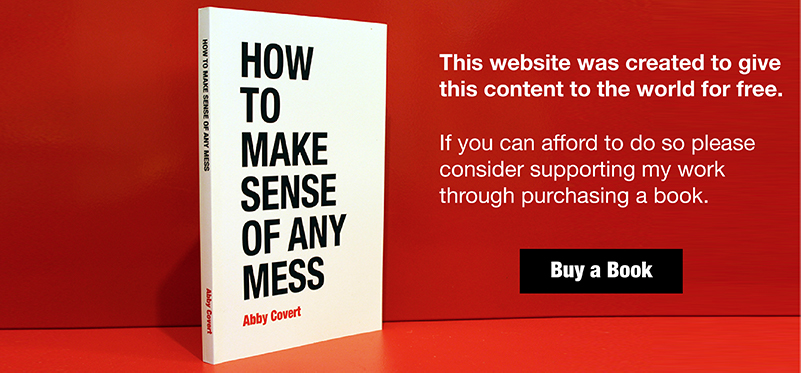Rules (noun.)
Definition: A decision prescribing what is possible or allowable.
Also referenced as: Rule (noun)
Related to: Classification, Controlled Vocabulary, Label, Taxonomy
Chapter 2: State your Intent | Page 46
State your intent.
Like Karen, you need to make sure the language you use to state your intent doesn’t stand in your way. The following exercise will help you state your intent and clarify your language with other people.
- First, choose a set of adjectives you want your users to use to describe what you’re making.
- Then, choose a set of adjectives that you’re okay with not being used to describe the same thing.
I find these rules helpful during this exercise:
- When put together, each set of words should neither repeat nor disagree with each other. The second set shouldn’t be a list of opposites from the first.
- Avoid negative adjectives, like slow or bad or ugly. Keep each word as neutral as possible. A good test is that someone shouldn’t be able to tell which list is positive or negative.
Chapter 3: Face Reality | Page 67
2. Flow Diagram
A flow diagram outlines the steps in a process, including conditions a user or system is under, and connections between tasks.
Conditions are rules that dictate the flow. For example, the path I take in the flow is different if I’m ordering for pickup or delivery.

Chapter 6: Play with Structure | Page 128
Sorting is easier than deciding how to sort.
Sorting is the act of arranging content according to established rules. The act of deciding how to sort something within a taxonomy is called classification.
If you have a large pile of things, it may take a lot of time to sort through them. But sorting isn’t the hard part. Classification is.
Think about sorting a bag of groceries into a pre-arranged pantry. Everything has a place. You’re simply following the plan. Easy, right?
Now unload that same bag into a kitchen without rules for where things go. How much longer would it take you? How much more frustrating a task would it be? How much variation would you get when the next person unloads groceries?
Sorting is easy when clear rules are in place. But without those rules, assumptions take over and things end up in places where they can be harder to find.
The most challenging part of classification is working with other people to agree on a set of rules.
Chapter 6: Play with Structure | Page 130
Ambiguity costs clarity; exactitude costs flexibility.
The more ambiguous you are, the more likely it is that people will have trouble using your taxonomy to find and classify things.
For every ambiguous rule of classification you use or label you hide behind, you’ll have to communicate your intent that much more clearly.
For example, what if I had organized the lexicon in the back of this book by chapter, instead of alphabetically? This might be an interesting way of arranging things, but it would need to be explained, so you could find a term.
The more exact your taxonomy becomes, the less flexible it is. This isn’t always bad, but it can be. If you introduce something that doesn’t fit into a category things can get confusing.
Because there are many words for the same thing, exact classifications can slow us down. For example, I recently tried to buy some zucchini at a grocery store. But it wasn’t until the clerk in training found the code for “Squash, Green” that she could ring me up.
Chapter 6: Play with Structure | Page 135
The way you organize things says a lot about you.
Classifying a tomato as a vegetable says something about what you know about your customers and your grocery store. You would classify things differently if you were working on a textbook for horticulture students, right?
How you choose to classify and organize things reflects your intent, but it can also reflect your worldview, culture, experience, or privilege.
Those same choices affect how people using your taxonomy understand what you share with them.
Taxonomies serve as a set of instructions for people interacting with our work.
Taxonomy is one of the strongest tools of rhetoric we have. The key to strong rhetoric is using language, rules and structures that your audience can easily understand and use.
